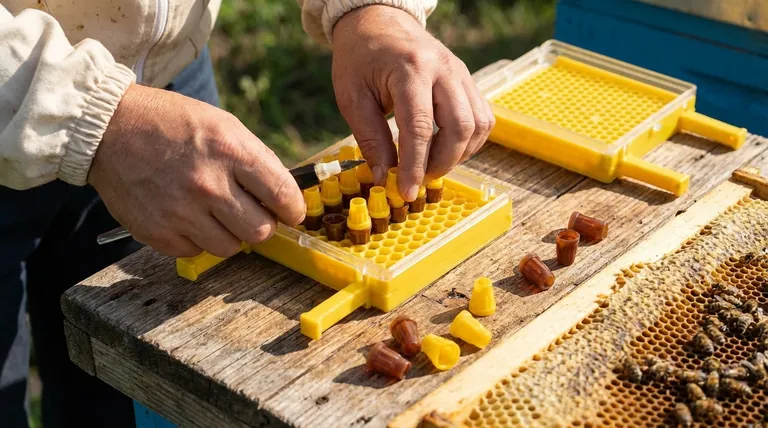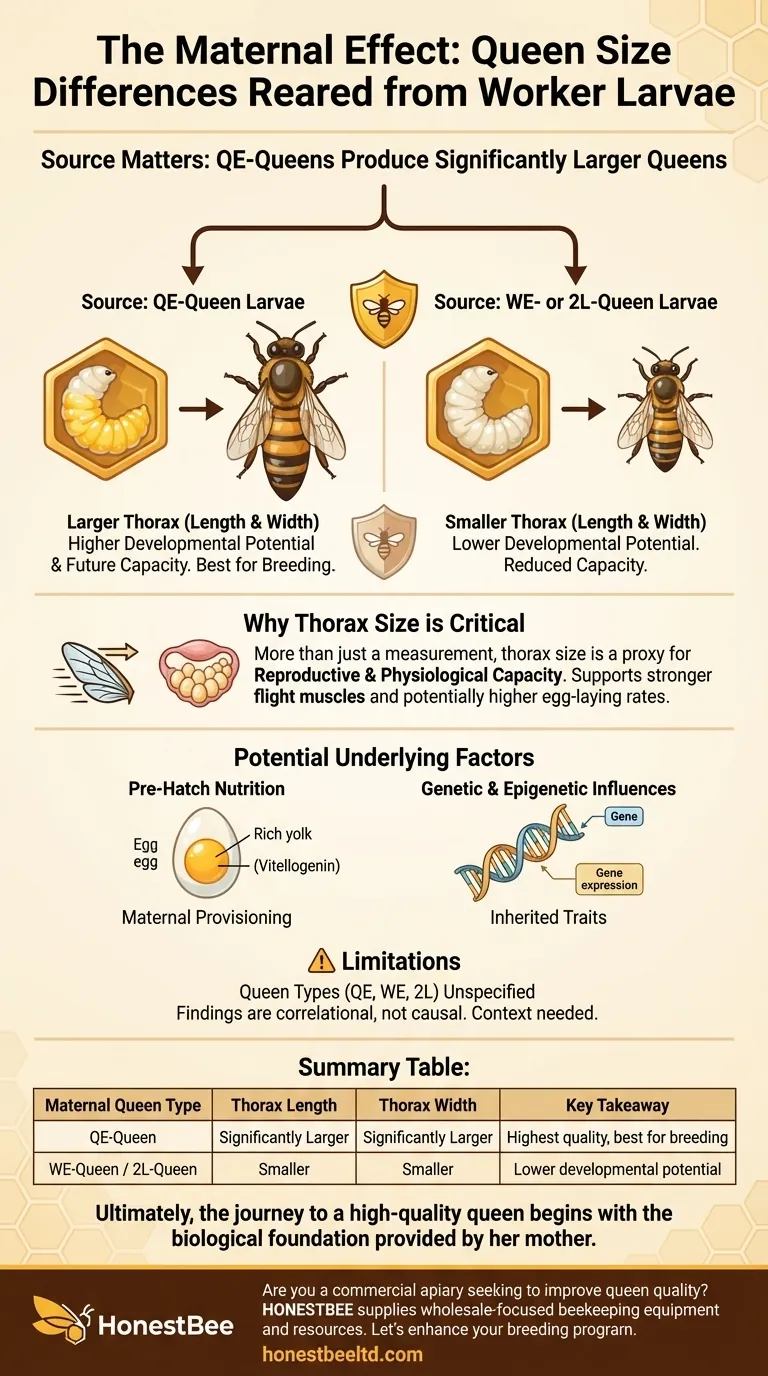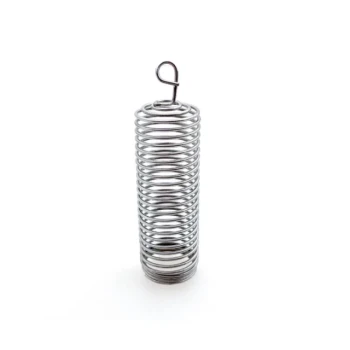In short, queens reared from worker larvae laid by QE-queens were significantly larger than those reared from the larvae of WE- or 2L-queens. The key physical metrics defining this size difference were thorax length and thorax width, both critical indicators of a queen honey bee's developmental success and future potential.
The central takeaway is that a queen's ultimate physical quality is not determined solely by the royal jelly she is fed. The maternal origin of the larva—the specific queen who laid the egg—plays a significant role in her final developmental outcome.

The Core Finding: Maternal Origin Matters
The research highlights a crucial variable in queen rearing: the source of the grafted larvae. Not all larvae possess the same developmental potential, even when given identical care.
Defining "Larger" Queens
The study quantified size using thorax length and width. This is a standard and reliable method in apicultural science.
The thorax houses the queen's flight muscles and vital organs. A larger, more robust thorax is often correlated with better overall health and functional capacity.
The Key Comparison
The data shows a clear and statistically significant result: larvae sourced from QE-queens consistently developed into larger adult queens.
Conversely, larvae taken from WE- or 2L-queens resulted in comparatively smaller queens, despite being of a similar age and presumably receiving similar care after being selected for rearing.
Why Thorax Size is a Critical Metric
A queen's thorax size is more than just a physical measurement; it's a proxy for her reproductive and physiological capacity.
A larger thorax supports stronger flight muscles, essential for successful mating flights. It is also linked to a more developed reproductive system, potentially leading to higher egg-laying rates and colony productivity.
Unpacking the "Why": Potential Underlying Factors
While the provided data establishes a clear correlation, the underlying biological mechanisms are not specified. However, we can infer logical explanations based on principles of insect biology.
Pre-Hatch Nutritional Provisioning
The queen who lays the egg provisions it with vital resources, such as vitellogenin (a key yolk protein).
It is plausible that QE-queens provide their eggs with a richer nutritional start. This "maternal effect" gives the larva a developmental head start that persists even after it hatches and begins feeding on royal jelly.
Genetic and Epigenetic Influences
The size difference could stem from the genetic lineage of the queens. Certain genetic lines may simply produce larger, more vigorous offspring.
Beyond pure genetics, epigenetic factors—molecular tags that regulate gene expression passed from mother to egg—could also influence the developmental trajectory of the larvae.
Understanding the Limitations
Objectivity requires acknowledging what the information does not tell us. This allows for a more accurate application of the findings.
Unspecified Queen Types
The core limitation is that the terms "QE-queen," "WE-queen," and "2L-queen" are not defined. Without knowing the specific characteristics or conditions these labels represent, we can only interpret the general principle.
For a full understanding, one would need to know if these labels refer to genetic lines, age, nutritional status, or the queen's laying environment (e.g., queenright vs. queenless colony).
Correlation vs. Causation
The finding establishes a strong correlation between the maternal source and the resulting queen's size.
However, it does not definitively prove the precise cause. Further research would be needed to isolate whether the primary driver is genetics, egg provisioning, or another maternal factor.
Making the Right Choice for Your Goal
This finding has direct, practical implications for anyone involved in rearing queen bees. The key is to recognize that the selection process begins before you even pick up a grafting tool.
- If your primary focus is maximizing queen quality: Prioritize selecting larvae from your most vigorous, productive, and well-provisioned "breeder" queens, as their maternal contribution is critical.
- If your primary focus is consistency in rearing: Do not treat all larvae as equal; standardize your grafting stock by using larvae from a single, high-performing breeder queen to reduce variability.
Ultimately, the evidence underscores that the journey to a high-quality queen begins not with the royal jelly she is fed, but with the biological foundation provided by her mother.
Summary Table:
| Maternal Queen Type | Thorax Length | Thorax Width | Key Takeaway |
|---|---|---|---|
| QE-Queen | Significantly Larger | Significantly Larger | Highest quality, best for breeding |
| WE-Queen / 2L-Queen | Smaller | Smaller | Lower developmental potential |
Are you a commercial apiary or distributor seeking to improve queen quality and colony productivity? The study confirms that superior genetics and maternal lineage are fundamental. HONESTBEE supplies beekeeping equipment and resources to support your queen rearing success. Let's discuss how our wholesale-focused solutions can help you select and rear the best queens. Contact HONESTBEE today to enhance your breeding program.
Visual Guide

Related Products
- Jenter Queen Rearing Kit Complete Set for Bee Breeding
- Nicot Queen Rearing Kit for Beekeeping and Grafting in Nicot System
- No Grafting Queen Rearing Kit: System for Royal Jelly Production and Queen Rearing
- Durable Galvanized Steel Spring Queen Bee Cage
- Brown Nicot Queen Cell Cups for Breeding Queen Bees Beekeeping
People Also Ask
- What is the timeline for queen breeding? A 28-Day Guide from Egg to Laying Queen
- What is queen rearing in beekeeping? Take Control of Your Apiary's Genetics
- How can beekeepers start a honey bee breeding program? Build a Superior, Resilient Apiary
- What happens to the colony population during the 5–6 weeks after a new queen emerges? Understand the Natural Dip and Rebound
- What genetic pathways differ in QE-queens? Unlocking the Master Controls of Queen Bee Biology



















